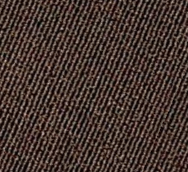
Creating tiled images with rotation and selection capabilities shouldn’t be a daunting task. In this blog post, I want to share my experience and take you on a journey behind the scenes of creating EasyTiler. We’ll explore its features, discuss its usage, and delve into the challenges I encountered along the way.
The Inspiration Behind EasyTiler
As a passionate game developer, I often found myself in need of seamless tilemaps generated from Google Earth images for my Unity games. However, existing tools on the market were either overly complex or lacked essential features. Fueled by the desire to create an intuitive and efficient solution, I embarked on the journey of building EasyTiler.
https://github.com/blindxfish/EasyTiler
Features and Functionality
EasyTiler offers a range of features designed to streamline the creation of tiled images:
- Image Selection: With EasyTiler, you can effortlessly choose an image file (.png, .jpeg, .jpg, .bmp) to serve as the foundation for your tiled image.
- Selection Rectangle: Using your mouse, simply draw a selection rectangle on the image, defining the specific area you want to tile.
- Rotation Control: Adjust the rotation angle using a slider control, allowing you to rotate your selection to any desired angle.
- Single Tile Extraction: EasyTiler allows you to extract a single tile from the tiled image. Just click the “Save Tile” button, specify the desired location, and provide a name for the file.
Overcoming Challenges
Building EasyTiler came with its fair share of challenges. Here are a few that I encountered along the way:
- Rendering and Cropping: Capturing the selected portion of the image accurately, especially when dealing with rotation, posed a significant challenge. I had to develop a custom rendering and cropping mechanism to ensure precise transformation and extraction of the selected area.
- Coordinate Transformations: Managing coordinate transformations and scaling between the canvas, image, and pixel dimensions required meticulous calculations and adjustments. Factors like image aspect ratio, canvas size, and pixel scaling had to be carefully considered to achieve accurate results.
- User Experience: Striving to create an intuitive and user-friendly interface was a top priority throughout the development process. Finding the right balance between simplicity and functionality was a challenge that required thoughtful design decisions.
How to Use EasyTiler
Using EasyTiler is a breeze:
- Install EasyTiler by downloading the built solution or cloning the repository.
- Launch the application and select an image file as the base for your tiled image.
- Draw a selection rectangle on the image, defining the area you want to tile.
- Adjust the rotation angle using the provided slider control.
- To save a single tile from the tiled image, click the “Save Tile” button and choose a location to save the file.
- Feel free to experiment with different images, selections, and rotation angles to create unique and captivating tiled images.
Conclusion
Building EasyTiler has been an incredible journey of bridging the gap between functionality and simplicity in tiled image creation. My hope is that EasyTiler empowers you to bring your creative visions to life and simplifies the process of creating stunning tiled images.
As I continue to enhance EasyTiler based on user feedback and my own ideas, I invite you to join me on this journey. Contributions, issue reports, and pull requests are always welcome on the project’s GitHub repository.
Start tiling and let your imagination run wild! 🖼️✨🔳
